|
|
Кацусика Хокусай. Тридцать шесть видов Фудзи: № 9. Водяная мельница в Ондене冨嶽三十六景 隠田の水車The Waterwheel at Onden (Onden no suisha), from the series Thirty-six Views of Mount Fuji (Fugaku sanjūrokkei)Artist: Katsushika Hokusai (1760–1849)Period: Edo period (1615–1868)Date: ca. 1830–32
Fuji sits in the misty distance, a silent observer of the daily life of the peasants taking place in the foreground. Men carry bundles uphill, women wash herbs in fresh water, while a young boy leads a turtle on a string. Turtles, like the "fungus-shaped" clouds pictured in another print, "Shichirigahama in Sagami Province," are associated with longevity. (The Metropolitan Museum of Art)
In this print, Hokusai contrasts the activities of people completely absorbed in their task with Mount Fuji, remote and untouched by the human condition. In his time, mills for hulling rice were powered by the waters of the Shibuya River in Onden. Located between Harajuku and Aoyama, now one of the posh centers of Tokyo, Onden was still a sparsely populated rural area in Hokusai’s time. Nearly the entire left half of the picture is occupied by the mill’s waterwheel. This wheel carries water into a wooden flume that cuts horizontally across the foreground. Two farmers carry in sacks of unhulled rice; women are washing hulled rice in the water of the flume. A little boy, bored, leads his pet turtle on a string to the water. No one is conscious of Mount Fuji – they are all too busy with their labors. This print clearly exhibits Hokusai’s tendency to dissect his surroundings, whether natural or human, into geometrical forms and reassemble them into a coherent composition: rectangles of the mill and flume, the wheel’s semicircle, the triangle of Fuji, and the round shapes of heads, sacks, and rice tubs. The gestures of the workers recall figures in his sketchbooks, the Hokusai Manga. The key-block was printed in blue; the publisher’s and the censor’s seal appear at the lower left. (The Asian Art Museum of San Francisco, HOKUSAI AND HIROSHIGE – Great Japanese Prints from the James A. Michener Collection, Honolulu Academy of Arts: The Asian Art Museum of San Francisco, 1998 Page 80. Cat. 31)
Водяная мельница в Ондене
В настоящее время деревня Онден в префектуре Аояма — это район перед синтоистским храмом в Харадзюку. Раньше здесь был тихий район, протянувшийся вдоль берега реки Ибуягава, так называемый «пояс полей и садов». Если посмотреть в «Собрании изображений Эдо» раздел про префектуру Аояма, то там постоянно фигурируют два иероглифа, которые в переводе означают «водяное колесо».
Художник изображает повседневную жизнь крестьян. Мужчины, которые носят на себе мешки с зерном, возможно с рисом. Женщины носят от этой мельницы чистую воду. Неподалеку от взрослых, которые заняты работой, изображен мальчик, видимо послушник храма, ведущий на поводке черепаху.
Все 46 гравюр серии «Тридцать шесть видов Фудзи» | Thirty-six Views of Mount Fuji | 富嶽三十六景 | Fugaku Sanjūrokkei
17 мая 2022, 9:45
0 комментариев
|
Партнёры
|








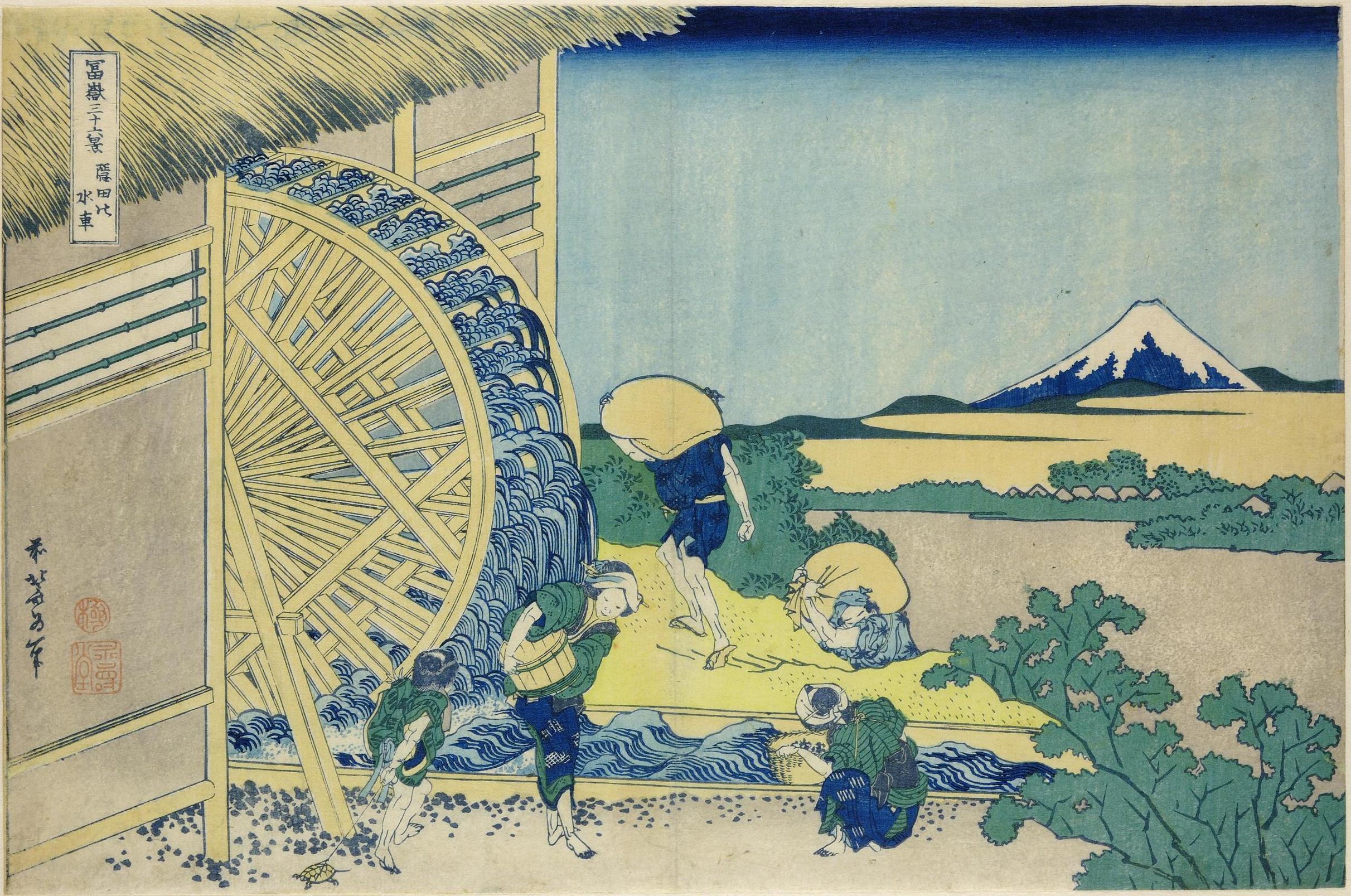
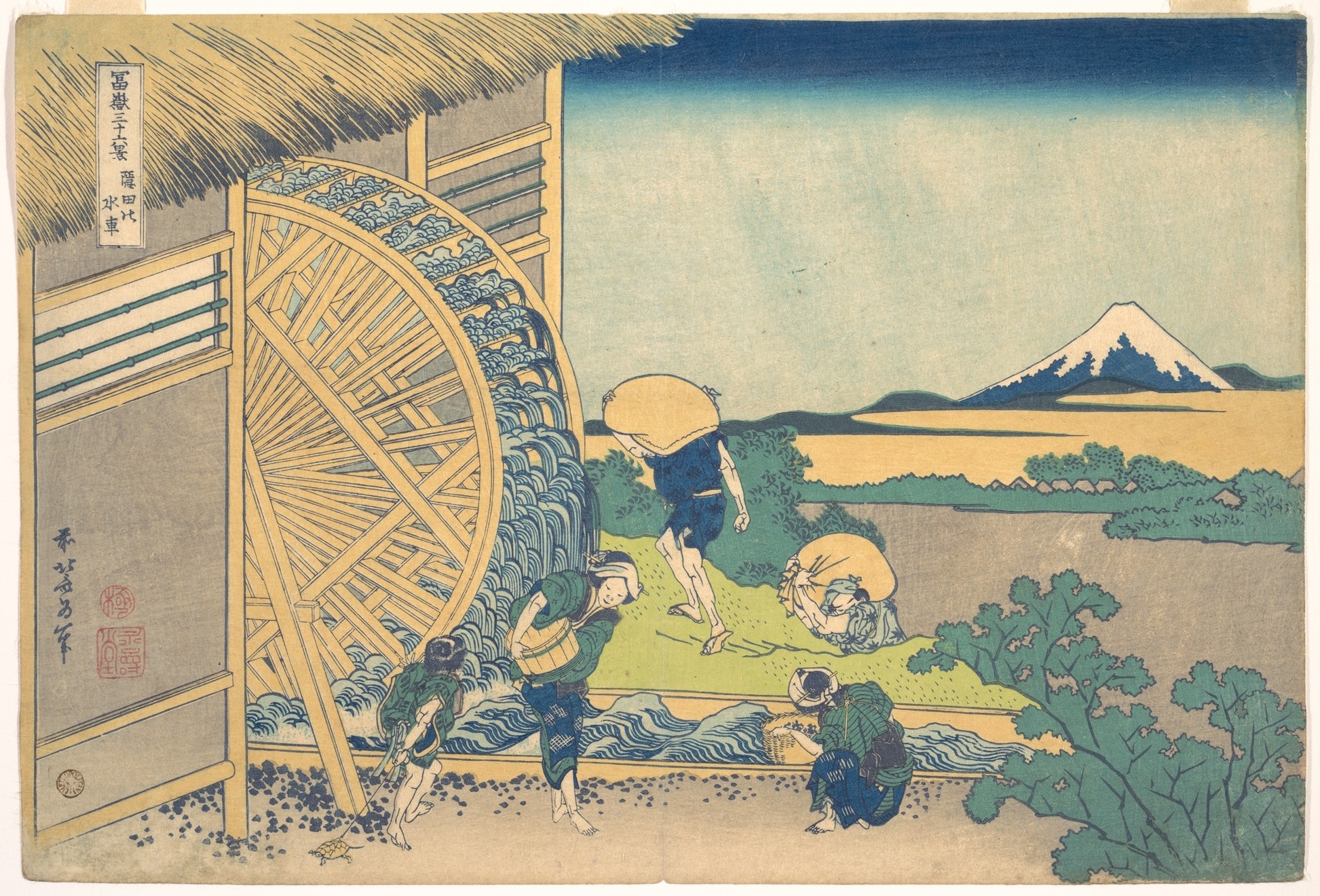


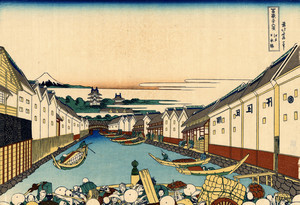
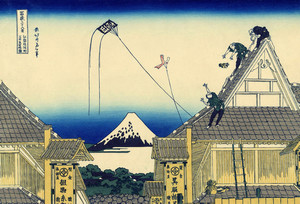
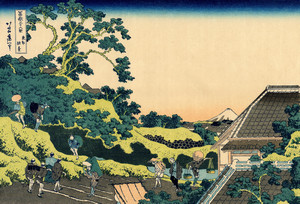
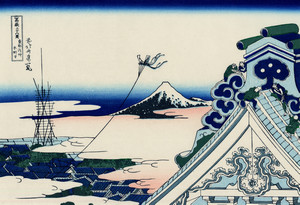
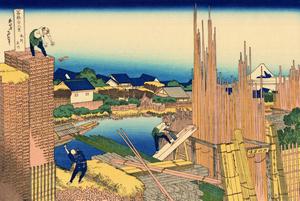
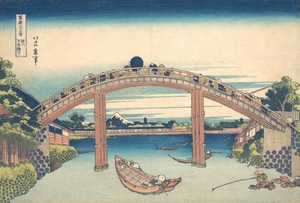
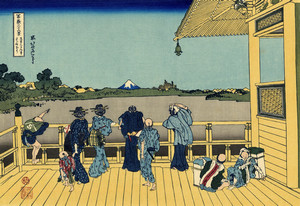
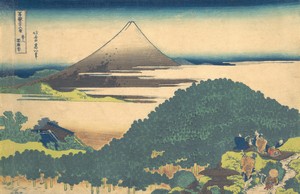
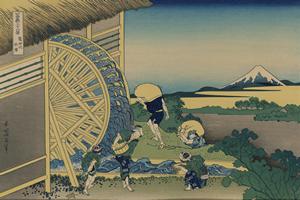
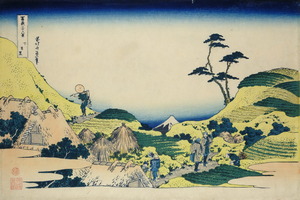
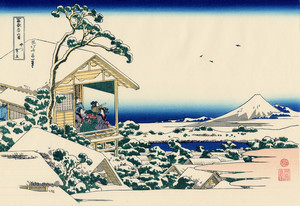
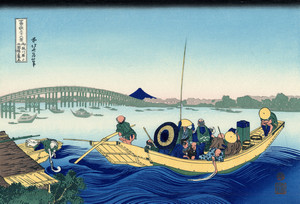
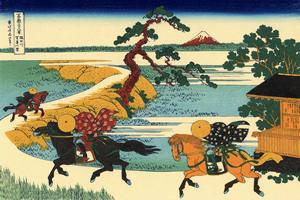
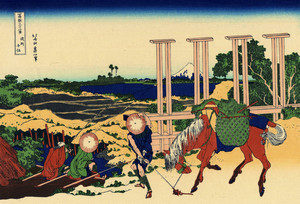
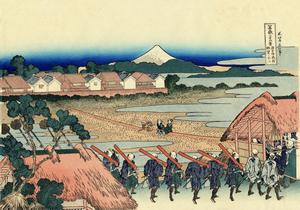
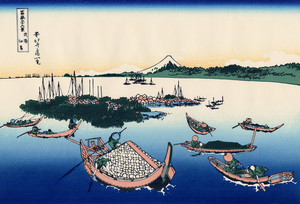
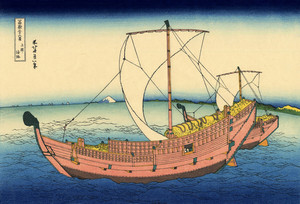
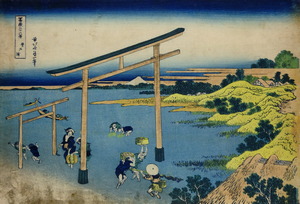
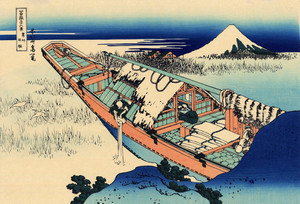
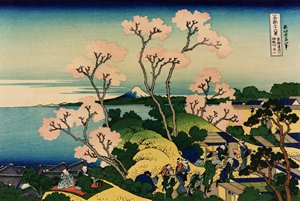
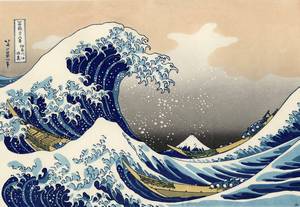
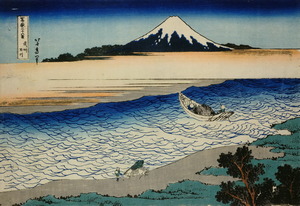
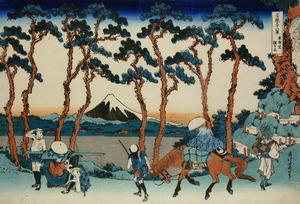
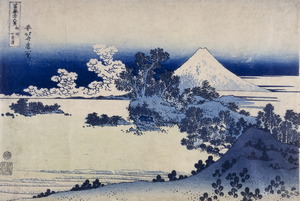
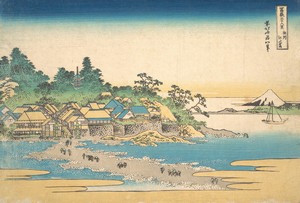
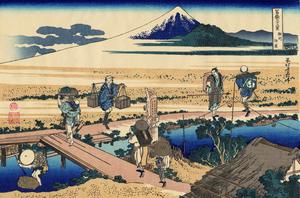
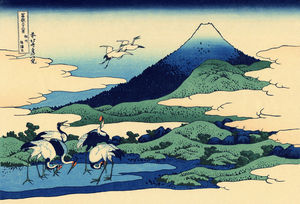
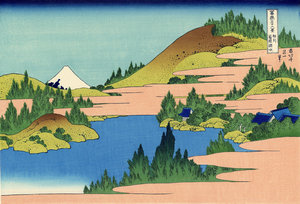
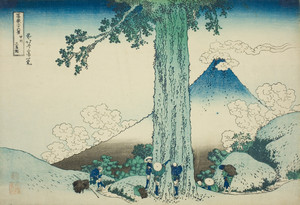
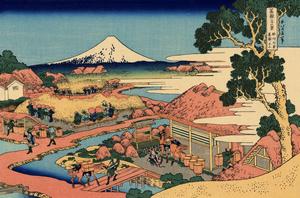
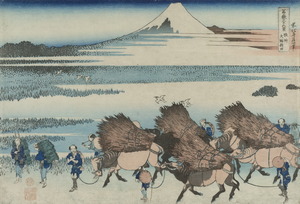
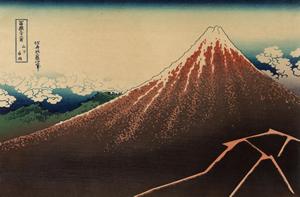
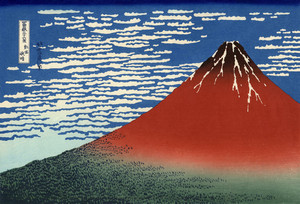
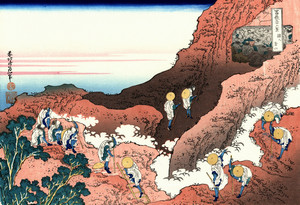
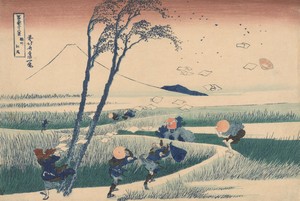
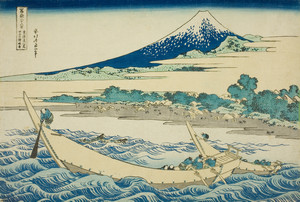
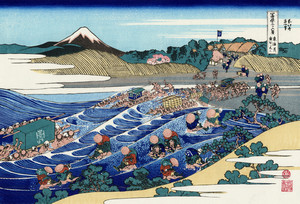
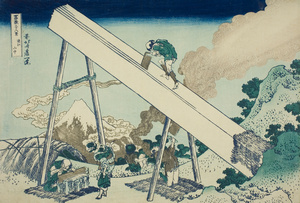
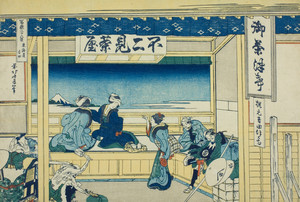
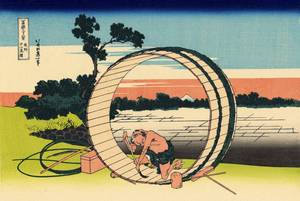
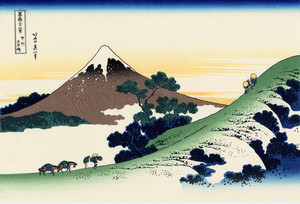
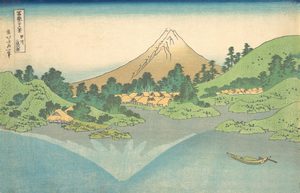
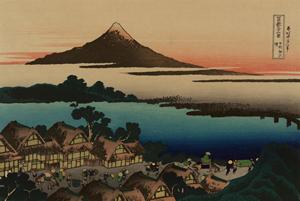
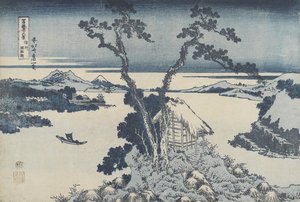
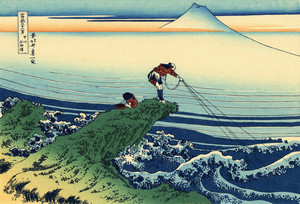
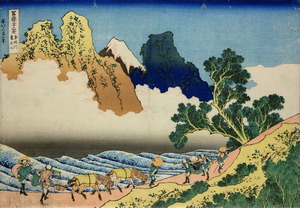





Комментарии
Добавить комментарий